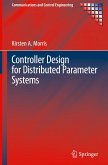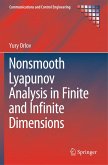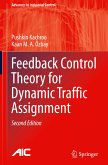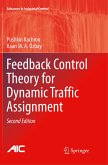This book addresses controller and estimator design for systems that vary both spatially and in time: systems like fluid flow, acoustic noise and flexible structures. It includes coverage of the selection and placement of actuators and sensors for such distributed-parameter systems.
The models for distributed parameter systems are coupled ordinary/partial differential equations. Approximations to the governing equations, often of very high order, are required and this complicates both controller design and optimization of the hardware locations.
Control system and estimator performance depends not only on the controller/estimator design but also on the location of the hardware. In helping the reader choose the best location for actuators and sensors, the analysis provided in this book is crucial because neither intuition nor trial-and-error is foolproof, especially where multiple sensors and actuators are required, and moving hardware can be difficult and costly. Themechatronic approach advocated, in which controller design is integrated with actuator location, can lead to better performance without increased cost. Similarly, better estimation can be obtained with carefully placed sensors. The text shows how proper hardware placement varies depending on whether, disturbances are present, whether the response should be reduced to an initial condition or whether controllability and/or observability have to be optimized.
This book is aimed at non-specialists interested in learning controller design for distributed-parameter systems and the material presented has been used for student teaching. The relevant basic systems theory is presented and followed by a description of controller synthesis using lumped approximations. Numerical algorithms useful for efficient implementation in real engineering systems and practical computational challenges are also described and discussed.
The models for distributed parameter systems are coupled ordinary/partial differential equations. Approximations to the governing equations, often of very high order, are required and this complicates both controller design and optimization of the hardware locations.
Control system and estimator performance depends not only on the controller/estimator design but also on the location of the hardware. In helping the reader choose the best location for actuators and sensors, the analysis provided in this book is crucial because neither intuition nor trial-and-error is foolproof, especially where multiple sensors and actuators are required, and moving hardware can be difficult and costly. Themechatronic approach advocated, in which controller design is integrated with actuator location, can lead to better performance without increased cost. Similarly, better estimation can be obtained with carefully placed sensors. The text shows how proper hardware placement varies depending on whether, disturbances are present, whether the response should be reduced to an initial condition or whether controllability and/or observability have to be optimized.
This book is aimed at non-specialists interested in learning controller design for distributed-parameter systems and the material presented has been used for student teaching. The relevant basic systems theory is presented and followed by a description of controller synthesis using lumped approximations. Numerical algorithms useful for efficient implementation in real engineering systems and practical computational challenges are also described and discussed.
"There are several features that make this text very timely and unique. ... the author concludes each chapter with a self-contained section summarizing the primary contents for the chapter and related advanced topics, along with a comprehensive (yet concise) set of references. ... Through its combination of theory, approximation techniques, and examples, the text provides a valuable resource for both instructors and readers seeking a self-contained introduction to control and estimation for distributed parameter systems." (Ralph C. Smith, IEEE Control Systems Magazine, Vol. 43 (1), February, 2023)







